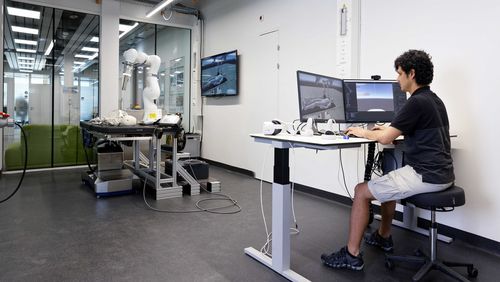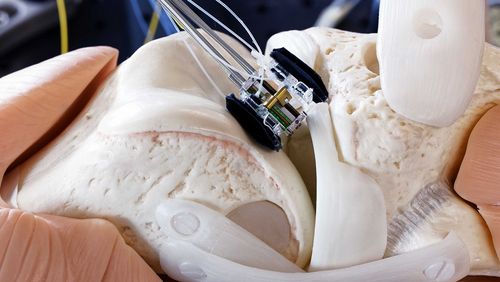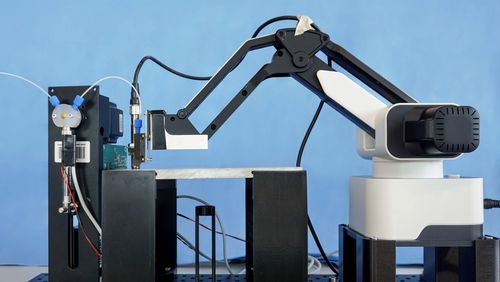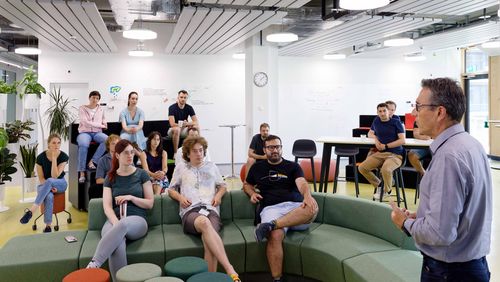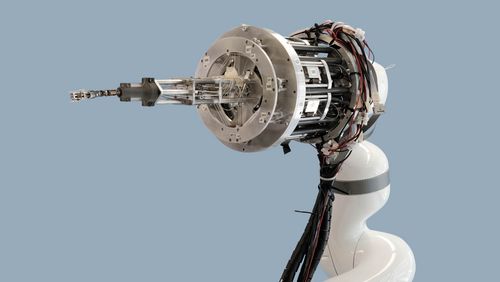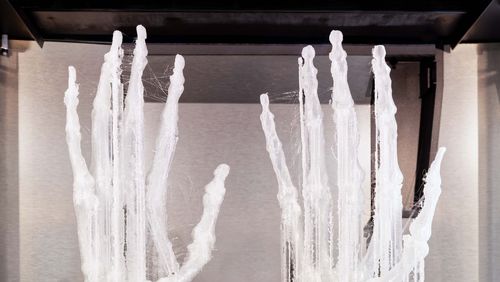
MIRACLE II
Laser scalpel replaces bone cutter – in the MIRACLE project at the University of Basel, researchers are looking to revolutionise bone surgery. Their robot-guided laser system is capable of making high-precision incisions, while newly developed sensors and a virtual reality software programme ensure that no errors occur.
Minimally invasive, highly precise, patient-friendly – this is bone surgery of the future. Researchers in the MIRACLE project at the University of Basel are working hard to make this vision a reality. The incisions made by their laser robot are five times finer than those made by conventional bone cutters, while miniature sensors and a 3D software programme promote patient safety.
Minimally invasive, patient-friendly interventions have become standard in many areas of medical care, but not in bone surgery. Indeed, modern bone cutters are fairly similar to primitive medieval instruments, and cutting bones remains a crude affair. The team in the MIRACLE project at the University of Basel and University Hospital Basel led by Philippe Cattin, Florian Thieringer and Georg Rauter want to change this.
The researchers in Basel are developing a robot-guided system that uses lasers to cut bones. Not only can the “laser scalpel” make extremely fine, precise incisions straight through the bone, it can cut curved and S-shaped lines too. This means that broken bones can be fitted together again like three-dimensional puzzle pieces, which leads to faster healing. In addition, sensors placed in the endoscope tip of the laser and a virtual reality software programme ensure that the laser cuts only the tissue that is targeted.
The team have already begun testing their system in knee surgery. Making ultra-exact incisions in the bone is, however, just the first step. Afterwards, the damaged bone requires an implant to heal. Seeking ways to create made-to-measure implants for individual patients and then insert them using minimally invasive techniques is one of the main objectives in MIRACLE II, the follow-up project to MIRACLE.
Facts and figures
Project
The MIRACLE II teams want to make simple, minimally invasive interventions a reality for a diverse range of bone operations. At the Department of Biomedical Engineering (DBE) at the University of Basel and the University Hospital Basel, they are developing a robot-guided system that cuts bones using laser technology and fabricating 3D-printed bone implants that are custom-made for individual patients.
Support
The Werner Siemens Foundation financed the initial MIRACLE project from 2014 to 2021. Based on the considerable success of the first project phase, the Foundation is also supporting the MIRACLE II project from 2022 to 2027.
Funding from the Werner Siemens Foundation
15.2 million Swiss francs for MIRACLE
12 million Swiss francs for MIRACLE II
Project duration
2015 to 2021 MIRACLE
2022 to 2027 MIRACLE II
Project leaders
Prof. Dr Philippe Cattin, Professor of Image-Guided Therapy and Head of the Department of Biomedical Engineering (DBE) at the University of Basel, Switzerland
PD Dr. mult. Florian M. Thieringer, Head of Medical Additive Manufacturing (Swiss MAM) and the “Smart Implants” research group at DBE; co-leader of MIRACLE II and of the 3D Print Lab and senior surgeon for oral and cranio-maxillofacial surgery at the University Hospital Basel, Switzerland
Prof. Dr Georg Rauter, head of Bio-Inspired RObots for MEDicine-Lab (BIROMED-Lab) at DBE at the University of Basel, Switzerland
